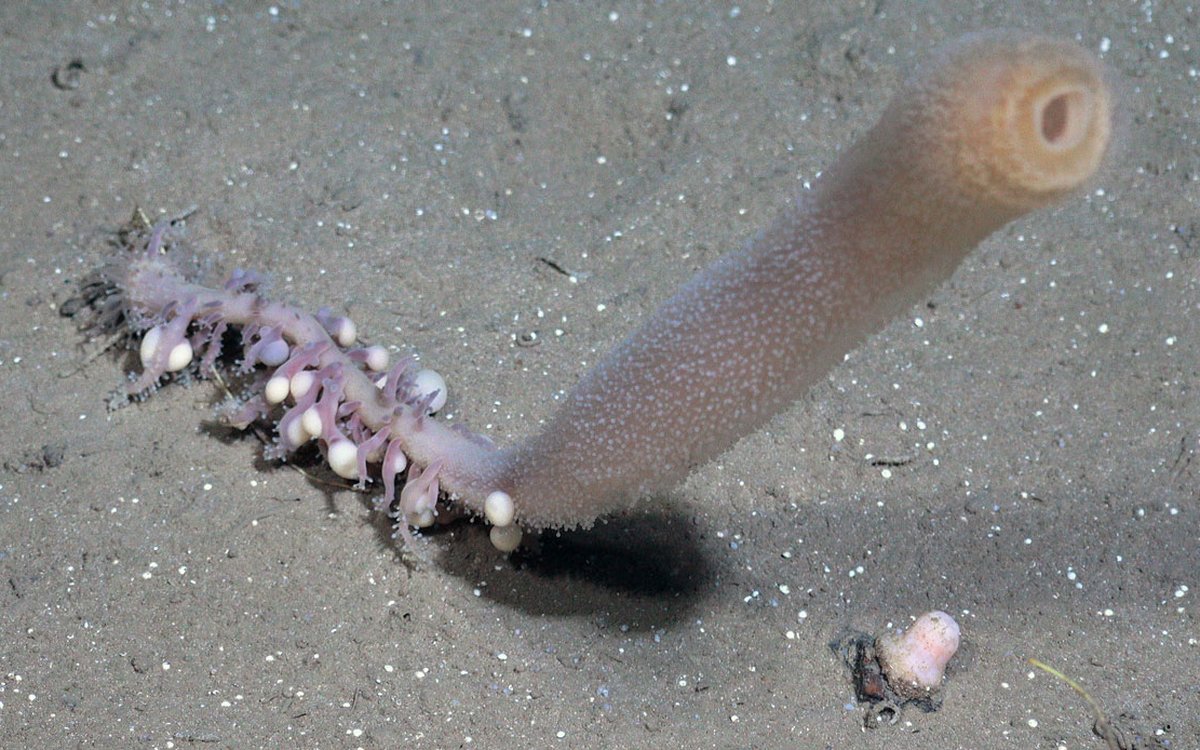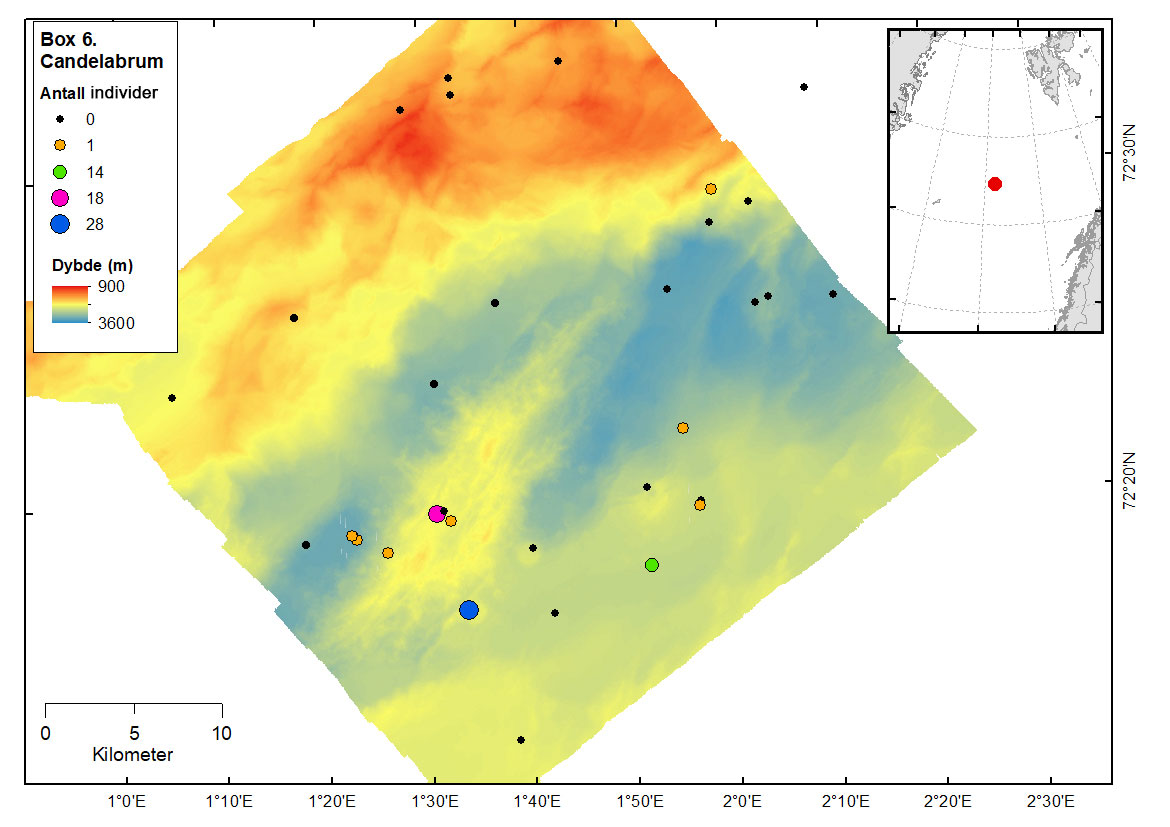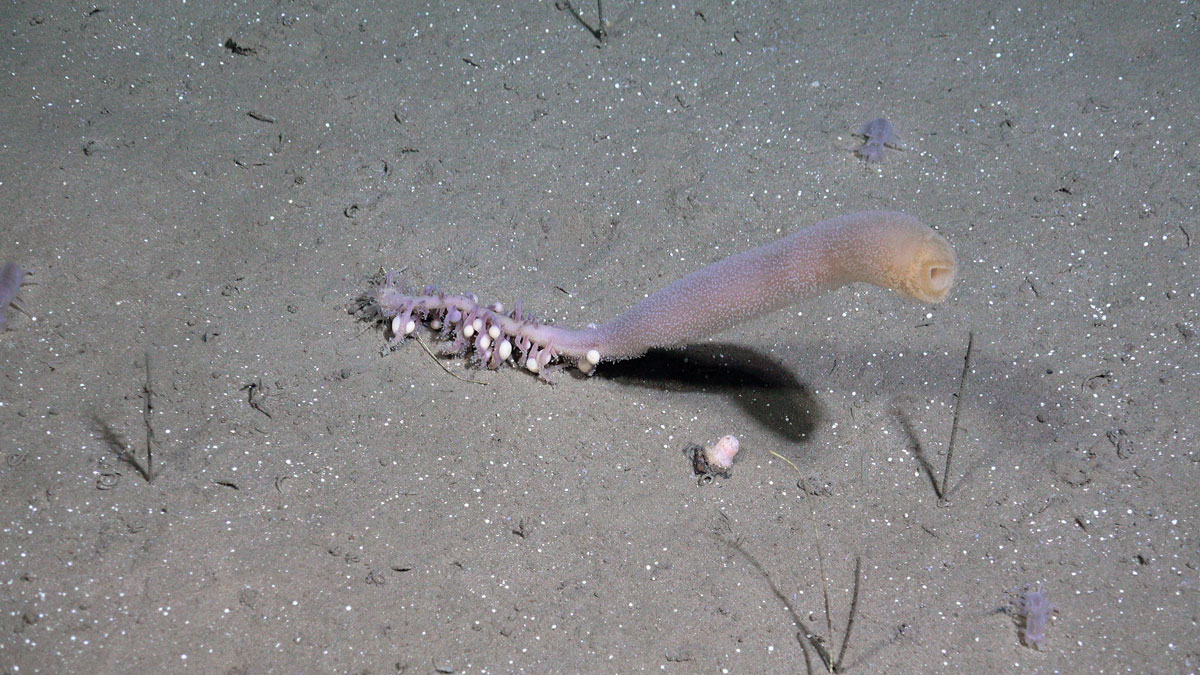
A large individual of the candelabrum hydroid Candelabrum attached to sandy mud on the Mohn Ridge. Photo: MAREANO / IMR (taken with ROV Ægir6000, NORMAR).
Photo: Mareano / Havforskningsinstituttet (filmet med ROV Ægir6000 / NORMAR)
A large individual of the candelabrum hydroid Candelabrum attached to sandy mud on the Mohn Ridge. Photo: MAREANO / IMR (taken with ROV Ægir6000, NORMAR).
Photo: Mareano / Havforskningsinstituttet (filmet med ROV Ægir6000 / NORMAR)Published: 17.10.2025
These soft, worm-like animals were found at nearly 30 percent of the investigated locations, at depths between 2050 and 2900 metres.

The hydroids were observed with the ROV on the south-facing slopes of the Mohn Ridge. The highest occurrence was recorded at one site where 18 individuals were observed along an 800-metre transect. At all sites where Candelabrum was found, the seabed consisted of sandy mud.
Candlabrum individuals are free-living hydroids with a worm-like body shape, ranging in length from 10 to 300 mm. The soft body is divided into three regions:

Globally, 15 species have been described within the genus Candelabrum. According to the Norwegian Species Information Centre (Artsdatabanken), six species have been recorded in Norway: C. cocksi, C. giganteum, C. minutum, C. mitra, C. phrygium og C. verrucosum. Among these, Candelabrum phrygium is the most common. The exact identity of the specimens observed on the Mohn Ridge is currently uncertain, and samples have been collected for further morphological and genetic analyses.
There are few previous records of this his group of hydroids in Norwegian waters. This is likely due to their occurrence at great depths where few surveys have been carried out, as well as their fragile nature — they easily disintegrate when collected with traditional sampling gear such as bottom trawls. ROV observations therefore provide a unique opportunity to document the presence and distribution of such species without damaging them.
The survey is part of MAREANO’s mapping of the Norwegian Sea, aimed at studying species diversity and seabed conditions in deep-sea areas along the Mohn Ridge and elsewhere in the Norwegian Sea. Discoveries like this contribute to a better understanding of deep-sea fauna composition and environmental conditions in these little-explored regions.
Species within the genus Candelabrum are known to be predators feeding on small crustaceans such as amphipods and copepods. The numerous stinging cells concentrated at the tip of the tentacles make it possible to capture relatively large prey, which can either be transported to the mouth or swallowed after the body bends toward the attachment point.
Like other athecate hydroids, Candelabrum species have a wide mouth that allows them to ingest prey of considerable size. They are usually seen lying flat just above the seabed, where they can capture small crustaceans crawling on or swimming close to the bottom. Shallow-water species of the same genus have been observed to react quickly upon contact with prey, using their tentacles to transport it to the mouth. During this year’s survey, however, the tip of the hydroid was often seen bent down toward the bottom — perhaps it can also feed directly from the sediment surface?